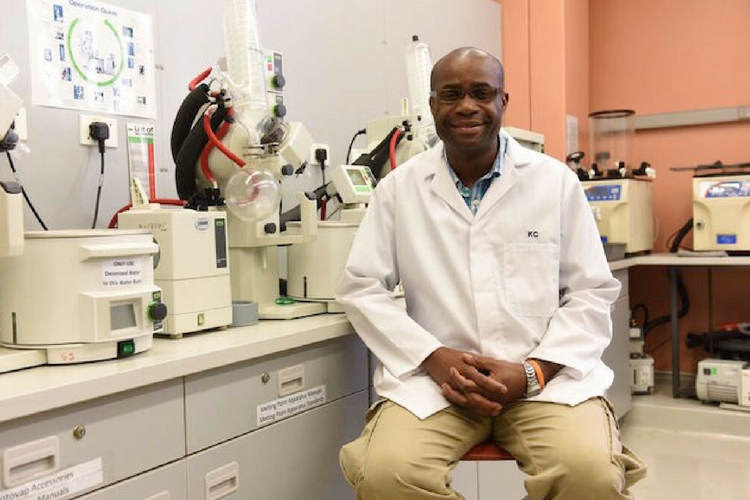In 2015, there were 214 million new cases of malaria recorded worldwide, with 88% of these cases occurring in Africa. In the same year, there were an estimated 438,000 malaria deaths worldwide, with 90% of these deaths in Africa. Children under five years old are particularly susceptible to malaria illness, infection and death. In 2015, malaria killed an estimated 306 000 children under five globally, including 292 000 children in the African region.
South Africa’s Science and Technology Minister recently announced that the research scientists at the University of Cape Town have discovered a compound that has the potential to cure malaria in a single dose.
The University of Cape Town (UCT)’s Drug Discovery and Development Centre, H3D, has identified a new potent anti- malarial development candidate with potential for both treatment and prevention of malaria. The compound, referred to as UCT943, is the second preclinical candidate to come out of the collaboration led by H3D involving the Switzerland based Medicines for Malaria Venture (MMV) and an international network of partners.
Developed to strengthen the parasite enzyme phosphoinositide 4 kinase inhibitor program, UCT943 has the same molecular target as MMV048, a promising new compound researched by an international team led by H3D and selected for development in 2012.
The data so far shows that UCT943 has promise to be more potent against the parasite, and to be easier to formulate, although these aspects will be the subject of the next studies, and ultimately will need to be validated in humans.
“Like MMV048, UCT943 has potent activity against all stages of the malaria parasite life cycle and has the potential to block transmission of the parasite from person to person and, as such, could contribute to the eradication of malaria, a disease that claims the lives of around half a million people every year,” said Professor Kelly Chibale, Founder and Director of H3D.
“The preclinical assessment of UCT943 is expected to take around 18 months, after which the hope is that it will progress into safety studies in human volunteers,” said Professor Chibale, who is also the founding Director of the South African Medical Research Council Drug Discovery and Development Research Unit at UCT and South Africa Research Chair in Drug Discovery under the South Africa Research Chairs Initiative (SARChI) of the South African government’s Department of Science and Technology (DST).
H3D is Africa’s first integrated drug discovery and development centre. When H3D was first launched in 2010, it was a team of five academic postdoctoral research scientists. Now, H3D has grown to a team of over fifty, attracting industry experienced drug discoverers from pharmaceutical companies based in India, the USA and Europe. It is also helping to train a new generation of African scientists, creating strong foundations for the future. This transformation has also allowed the transfer of key skills and technology to South Africa: from medicinal chemistry to biology and pharmacokinetics. The H3D portfolio also includes projects targeting tuberculosis drug discovery and is now expanding to address the serious threat of Antimicrobial Resistance, specifically resistant Gram negative bacteria.
This project has been funded by MMV, the Technology Innovation Agency (TIA) and Strategic Health Innovation Partnerships (SHIP) unit of the South African Medical Research Council. This has been critical in helping H3D reinforce scientific networks of drug discoverers, particularly understanding the role of UCT943 to block the transmission of the parasite. This aspect of H3D’s work has benefitted from the South African Transmission blocking Consortium (SATBC), which involves researchers from the University of Pretoria, Council for Scientific and Industrial Research, University of the Witwatersrand and National Health Laboratory Services and is funded by SHIP. SHIP is an initiative of the DST whereas TIA is an agency of the DST.
BRIEF HISTORY OF MALARIA TREATMENTS
For thousands of years, traditional herbal remedies have been used to treat malaria. The first effective treatment for malaria came from the bark of cinchona tree, which contains quinine. After the link to mosquitos and their parasites were identified in the early twentieth century, mosquito control measures such as widespread use of DDT, swamp drainage; covering or oiling the surface of open water sources, indoor residual spraying and use of insecticide treated nets was initiated. Prophylactic quinine was prescribed in malaria endemic areas, and new therapeutic drugs, including chloroquine and artemisinins, were used to resist the scourge.
Malaria researchers have won multiple Nobel Prizes for their achievements, although the disease continues to afflict some 200 million patients each year, killing more than 600,000.
At the close of the 20th century, malaria remained endemic in more than 100 countries throughout the tropical and subtropical zones, including large areas of Central and South America, Hispaniola (Haiti and the Dominican Republic), Africa, the Middle East, the Indian subcontinent, Southeast Asia, and Oceania. Resistance of Plasmodium to anti-malaria drugs, as well as resistance of mosquitoes to insecticides and the discovery of zoonotic species of the parasite have complicated control measures.




